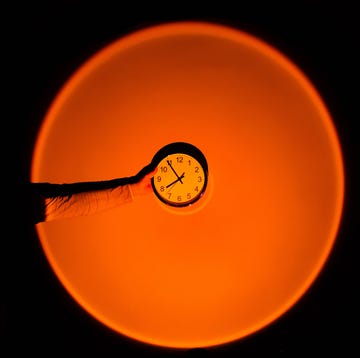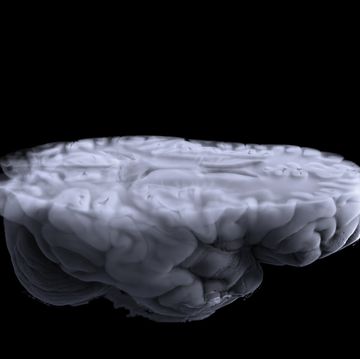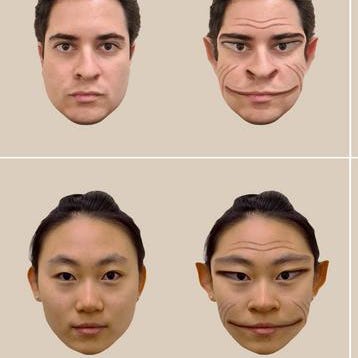We humans tend to think about our immune system only when it fails and we come down with a cold or flu. But every day that we walk around healthy, it's because white blood cells are waging a tireless war on bacteria, viruses, and parasites that invade our bodies, tracking down these foreign agents in the body and eliminating them.
Any defense can get overwhelmed, though, and our immune system is no exception. That's why a growing number of researchers are trying to improve on nature and develop their own white blood cells—and maybe learn a bit about how our own cells work in the process.
Daniel Hammer, professor of chemical engineering and biological engineering at the University of Pennsylvania, is building white blood cells in the lab from plastics that can act as artificial cell walls. Think of a gel capsule of your preferred headache medicine but on a much smaller scale and with a programmable molecular brain. These synthetic cells, known as leuko-polymersomes, could one day deliver the latest cancer-killing drugs directly to a tumor or send out a chemical beacon that signals natural white blood cells to come and join the fight against a disease.
"Ultimately I think that we could program these cells to do things that we never thought white blood cells could do," Hammer says. Instead of boosting immune response, for example, Hammer envisions synthetic cells that could act as inhibitors to the body's defenses, providing relief for people suffering from autoimmune disorders.
Hammer has been studying how to turn plastics into cellular structures for more than a decade, but it's just in the past few years that the field has kicked into high gear. His team is learning to mimic the targeting capabilities that let natural white blood cells take the fight to viruses and bacteria—what Hammer describes as a kind of "molecular zip coding"—and the adhesive properties that let them stand their ground when they arrive. In 2010, Hammer and colleagues from Duke University designed synthetic molecules shaped like the receptors white blood cells use to find and adhere to inflamed tissue. In-vitro tests showed that synthetic cells could seek out inflamed tissue and stick to it once they arrived.
That's only part of the process, however. Once a leuko-polymersome has adhered to an infected cell, it needs to release its medicinal payload. Last year, Hammer's team collaborated with researchers from the University of Delaware to show that a blast of UV light could prompt these biodegradable plastics to unravel and release their contents. That's an early step toward synthetic cells that could be programmed to release their contents on cue.
Hammer's synthetic white blood cells aren't the only drug-delivery device taking cues from nature. At UCLA, Tim Deming and his team are among the growing number of scientists taking their inspiration from some of nature's most notorious bad guys: viruses.
For as much havoc as they can cause, viruses are, in principle, surprisingly simple things: shells made of lipids and proteins that are very good at injecting their own RNA into cells. That's how they reproduce, which is pretty much all viruses do. "If you view a virus as a very efficient delivery vehicle, that's what we're trying to replicate," Deming says.
But using viruses to deliver medicine has its own set of problems. First among them is that they're still viruses. Even if you attach a helpful gene or drug to a virus and send it off to do good, your body still reads the virus as a threat and reacts accordingly, trying to eliminate the foreign invader.
"Viruses are very good at delivering their genes," Deming says. "But our body is very good at defeating viruses. Your immune system will attack them, and your organs will help filter them out. Natural viruses also replicate incredibly rapidly, and our medicinal viruses aren't doing that yet, so they get wiped out very quickly."
Deming's solution to this problem is a sort of trick play. The researchers wrap whatever chemicals they want to deliver inside a shell that's made of the same sort of materials as the outer walls of a virus: amino acids that assemble into chains. "We have a bunch of small, identical units that assemble into a sphere that can hold itself together," he says. However, because Deming's viruses are built from amino acids created in a lab, they don't set off the same alarm bells that a hollowed out virus shell can, potentially letting them make an end run around the immune system. Deming and his collaborators have already demonstrated how smaller polypeptide chains can travel within these larger cells, then pass through the artificial membrane and into living cells, which is how they would deliver their medicinal payload.
This organic approach sacrifices the strength and stability of the polymers Hammer uses but also lets the lab-created cells interact with the body more naturally. For instance, Deming's lab has built polypeptide membranes that dissolve and release their contents in response to changes in the acidity of their environment. Right now, those changes have only occurred in test tube experiments, where the pH involved would be toxic to living cells, but it demonstrates that the research is on the right track. "If you use natural materials, the body recognizes that and can interface with it," Deming says.
Both lab-created viruses and white blood cells carry great medicinal potential, but to a scientist like Hammer, the project is about more than that. By trying to copy some of what nature has done, he's also learning about the incredible intricacy of cells. "A cell is a complex machine with lots and lots of parts that does really simple things," he says.














